
Family Reunion Wildfires SFO -> LAX LAX -> DEN Independence Day Cave of the Winds Underground Breakfast at No. One Garden of the Gods Royal Gorge Bowl of Cherries Masala Tea Seven Falls Native American dancers Broadmoor Hotel The Creek Helen Hunt Jackson Castaways DEN -> LAX -> SFO Timber Lodge Eats in CO NORAD
|
.
.
.
.
.
.
.
.
.
.
.
.
.
.
.
.
.
.
.
.
.
.
.
.
.
.
.
.
.
.
.
.
.
.
.
.
.
.
.
.
.
.
|
2002 Colorado: NORAD
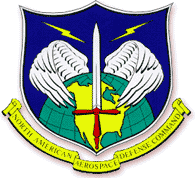
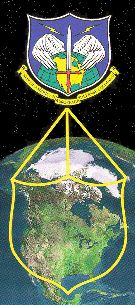 Not exactly Frodo Baggins' cozy hole at Bag's End, the Cheyenne Mountain North American Aerospace Defense Command (NORAD) facility is the semi-secret 500-pound gorilla that overshadows the entire Colorado Springs / Manitou Springs area.
Protecting both U.S. and Canadian interests, the NORAD facility is a fascinating place with an interesting history.
Not exactly Frodo Baggins' cozy hole at Bag's End, the Cheyenne Mountain North American Aerospace Defense Command (NORAD) facility is the semi-secret 500-pound gorilla that overshadows the entire Colorado Springs / Manitou Springs area.
Protecting both U.S. and Canadian interests, the NORAD facility is a fascinating place with an interesting history.
 Unfortunately I didn't realize that tours of the mountain complex are sometimes available - there are no tourist brochures, for example - so I didn't investigate while we were there. But I'm sure we'll return, and this time I'll be more cluefull. Sigh. [Update: I've read that tours were cancelled prior to 9/11, so perhaps I can't get in. I'll update this update.]
Unfortunately I didn't realize that tours of the mountain complex are sometimes available - there are no tourist brochures, for example - so I didn't investigate while we were there. But I'm sure we'll return, and this time I'll be more cluefull. Sigh. [Update: I've read that tours were cancelled prior to 9/11, so perhaps I can't get in. I'll update this update.]
The Structure
Construction of the facility began in May 1961 and opened five years later. 1.5 million pounds of dynamite were used to excavate approximately 700,000 tons of pink Pikes Peak granite. The complex is capable of providing it's own air, water, and power for its 800 personnel. A month's worth of food is kept on hand.
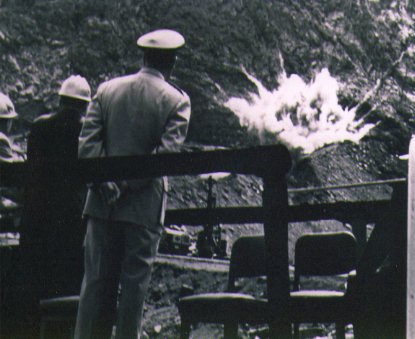
by CMOC
The Cheyenne Mountain Air Force Station (CMAFS) is commonly referred to as the Cheyenne Mountain Operations Center, CMOC, or just Cheyenne Mountain. Housed within are elements of NORAD, USSPACECOM (United States Space Command), and AFSPC (Air Force Space Command).
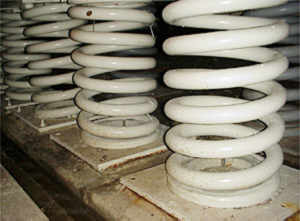
by CMOC
The actual operations complex is a series of 15 buildings, 12 of which are three stories tall. Each building has its own tunnel and functions independently of the remaining structures. These buildings are mounted on a total of 1,319 springs, each weighing 1,000 pounds, allowing for horizontal sway up to 12 inches in any direction; protection from earthquake or nuclear explosion.
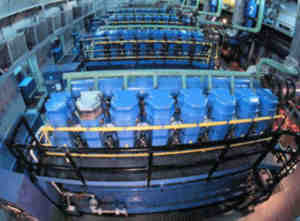
by CMOC
The complex has a three-level power system: primary is the local commercial electricity, secondary are six 2,800 horsepower diesel engines, tertiary are 3,500 batteries.
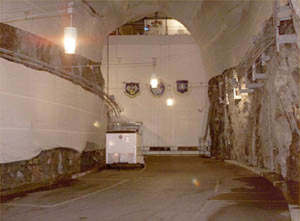
by CMOC
Cheyenne Mountain has four water reservoirs; a six million gallon capacity. The primary water supply is from a natural spring under building eight which supplies 30-120 thousand gallons per day, of which is used 10-15 thousand gallons daily.
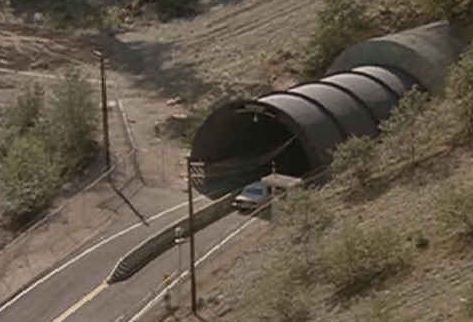 110,000 rock bolts reinforce the tunnel structure. These are 6 to 32 feet long. Akin to molly bolts, these act like someone inside pushing outward on the walls, preventing cave-in.
[Macro error: Mac OS Error: -1409.]
110,000 rock bolts reinforce the tunnel structure. These are 6 to 32 feet long. Akin to molly bolts, these act like someone inside pushing outward on the walls, preventing cave-in.
[Macro error: Mac OS Error: -1409.]
by Eugene Chavez
The complex is protected by three blast doors. The two main doors weigh 25 tons; constructed of 3 feet thick baffled steel. They can be mechanically closed in 30 seconds, manually in about five minutes (by two people!). Air, water, and wastewater entering and exiting the mountain are protected by blast valves. Triggered by sensors at the north and south portals, the valves cycle back open after 40 seconds and divert the intake air through chemical-biological-radiation filters.
The Inhabitants
NORAD/USSPACECOM Command Center: combines and coöridinates data from the other centers and passes it to the National Command Authorities of both the U.S. and Canada.
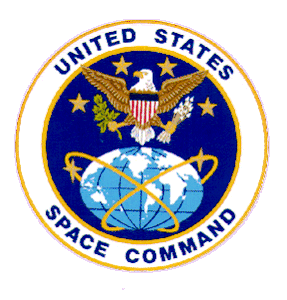 Air Warning Center: monitors the periphery of Canada and the U.S. to detect any airspace violations.
Missile Warning Center: uses a worldwide sensor and communication network to provide warning of missile attack launched against North America or U.S. and allied forces overseas.
Air Warning Center: monitors the periphery of Canada and the U.S. to detect any airspace violations.
Missile Warning Center: uses a worldwide sensor and communication network to provide warning of missile attack launched against North America or U.S. and allied forces overseas.
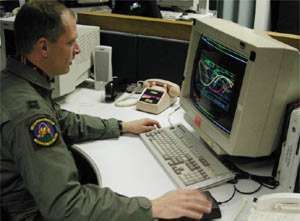
by CMOC
Space Control Center: detects, tracks, identifies, and catalogs all man-made object orbiting the earth, currently numbering over 8,300 objects.
[Macro error: Mac OS Error: -1409.]
[Macro error: Mac OS Error: -1409.]
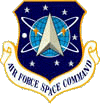 Combined Intelligence Watch: gathers intelligence assisting CMOC in analyzing, validating, and correlating worldwide events.
Combined Intelligence Watch: gathers intelligence assisting CMOC in analyzing, validating, and correlating worldwide events.
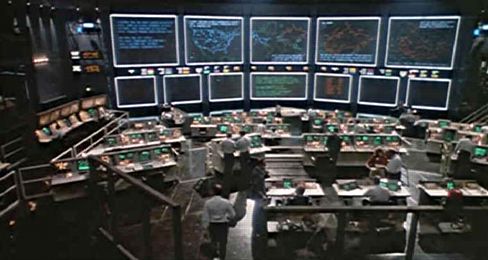 Weather Support Unit: meteorological monitoring of terrestrial, geophysical, and solar weather events.
Weather Support Unit: meteorological monitoring of terrestrial, geophysical, and solar weather events.
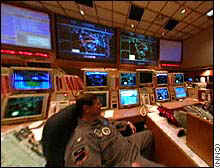 Systems Center: provides communications and computer systems management and monitors the electrical power generation, water purity, and air quality systems.
Systems Center: provides communications and computer systems management and monitors the electrical power generation, water purity, and air quality systems.
 Cheyenne Mountain Upgrade
From the FY1997 DOT&E Annual Report:
The Cheyenne Mountain Upgrade (CMU) Program consists of upgrades to North American Air Defense Command's (NORAD) ballistic missile, air, space, and command center elements within the Cheyenne Mountain Complex outside Colorado Springs, CO. CMU also upgrades and provides new capability to survivable communication and warning elements at the National Military Command Center (NMCC), U.S. Strategic Command (USSTRATCOM), and other forward user locations. CMU additionally provides at Offutt, AFB an austere backup to Cheyenne Mountain ballistic missile warning.
Cheyenne Mountain Upgrade
From the FY1997 DOT&E Annual Report:
The Cheyenne Mountain Upgrade (CMU) Program consists of upgrades to North American Air Defense Command's (NORAD) ballistic missile, air, space, and command center elements within the Cheyenne Mountain Complex outside Colorado Springs, CO. CMU also upgrades and provides new capability to survivable communication and warning elements at the National Military Command Center (NMCC), U.S. Strategic Command (USSTRATCOM), and other forward user locations. CMU additionally provides at Offutt, AFB an austere backup to Cheyenne Mountain ballistic missile warning.
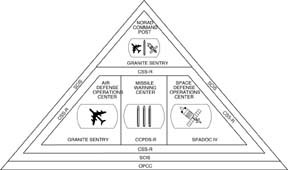 CMU's modernization and new capabilities enhance the ability of our nation's civilian and military leadership to rapidly and accurately correlate Integrated Tactical Warning and Attack Assessment (TW/AA) information in direct support of their critical need for information superiority. CMU provides commanders with timely, accurate, and unambiguous information regarding enemy missile, air, and space systems throughout the full spectrum of conflict. CMU allows for immediate response to changing situations and the military advantage of full-dimensional protection.
The CMU program consists of the following major subsystems:
• Granite Sentry provides a Message Processing Subsystem and a Video Distribution Subsystem, and it upgrades the NORAD Computer System display capability and four major centers: (1) the Air Defense Operations Center, (2) the NORAD Command Center, (3) the Battle Staff Support Center, and (4) the Weather Support Unit. Granite Sentry also processes and displays nuclear detection data provided from the Integrated Correlation and Display System.
• The Communications System Segment Replacement (CSSR) is an internal Cheyenne Mountain Complex and Alternate Missile Warning Center communications system that provides connectivity between mission areas, sensors, and forward users.
• The Survivable Communications Integration System (SCIS) provides the system with reliable and survivable communications between the ten missile warning sensor sites, two correlation centers, and eight forward users for transmission and receipt of missile warning sensor data and other Integrated TW/AA information.
• The Space Defense Operations Center 4 provides an automated command, control, and communication capability for space defense and space surveillance to the National Command Authorities.
• The Command and Control Processing and Display System Replacement (CCPDS-R) provides near-real-time processing, display and distribution of ballistic missile ITW/AA information, including nuclear detonation reports, to the National Command Authorities and forward users.
• The Alternate Missile Warning Center, located at Offutt AFB, is functionally equivalent to Cheyenne Mountain's systems for processing, display, and distribution of missile warning data and is the prime correlation center providing missile warning data to USSTRATCOM for force management.
CMU's modernization and new capabilities enhance the ability of our nation's civilian and military leadership to rapidly and accurately correlate Integrated Tactical Warning and Attack Assessment (TW/AA) information in direct support of their critical need for information superiority. CMU provides commanders with timely, accurate, and unambiguous information regarding enemy missile, air, and space systems throughout the full spectrum of conflict. CMU allows for immediate response to changing situations and the military advantage of full-dimensional protection.
The CMU program consists of the following major subsystems:
• Granite Sentry provides a Message Processing Subsystem and a Video Distribution Subsystem, and it upgrades the NORAD Computer System display capability and four major centers: (1) the Air Defense Operations Center, (2) the NORAD Command Center, (3) the Battle Staff Support Center, and (4) the Weather Support Unit. Granite Sentry also processes and displays nuclear detection data provided from the Integrated Correlation and Display System.
• The Communications System Segment Replacement (CSSR) is an internal Cheyenne Mountain Complex and Alternate Missile Warning Center communications system that provides connectivity between mission areas, sensors, and forward users.
• The Survivable Communications Integration System (SCIS) provides the system with reliable and survivable communications between the ten missile warning sensor sites, two correlation centers, and eight forward users for transmission and receipt of missile warning sensor data and other Integrated TW/AA information.
• The Space Defense Operations Center 4 provides an automated command, control, and communication capability for space defense and space surveillance to the National Command Authorities.
• The Command and Control Processing and Display System Replacement (CCPDS-R) provides near-real-time processing, display and distribution of ballistic missile ITW/AA information, including nuclear detonation reports, to the National Command Authorities and forward users.
• The Alternate Missile Warning Center, located at Offutt AFB, is functionally equivalent to Cheyenne Mountain's systems for processing, display, and distribution of missile warning data and is the prime correlation center providing missile warning data to USSTRATCOM for force management.
 |
previous |
next |
 |
|
 subscribe
subscribe
 subscribe
subscribe